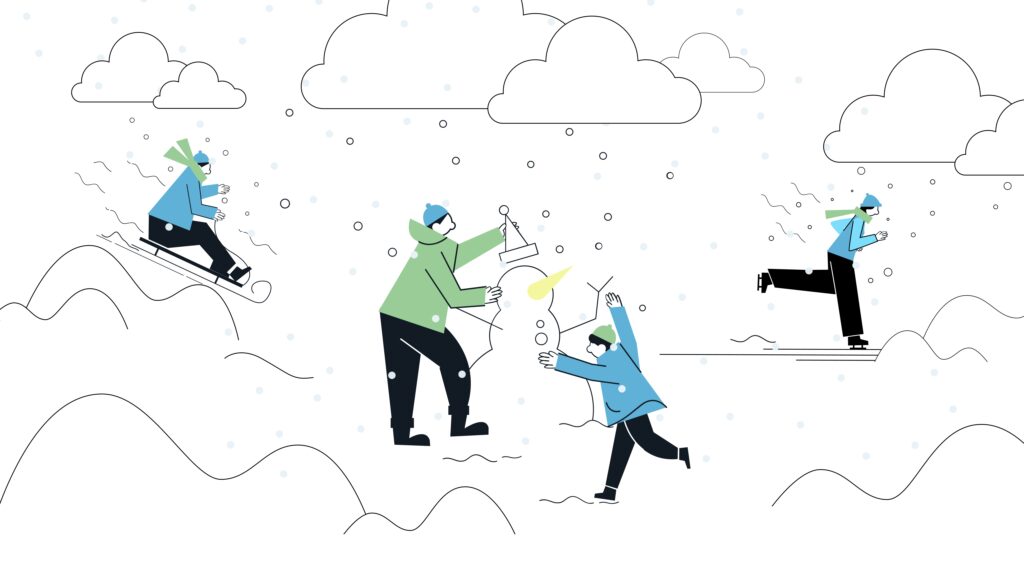A snow day is often the most anticipated time of year for students and a hassle for working professionals, but one thing is certain: snow days have a significant impact on everyone’s schedules. Whether you’re a student eagerly waiting for school to be canceled or a business owner trying to manage operations, knowing how to predict and plan for snow days can make all the difference. Enter the snow day calculator, an innovative tool that helps forecast the likelihood of a snow day based on weather patterns, historical data, and specific geographical conditions. In this comprehensive guide, we will explore what a snow day calculator is, how it works, and why it’s an essential tool for planning ahead.
What is a Snow Day Calculator?
A snow day calculator is a digital tool designed to predict the likelihood of school closures, business shutdowns, or work-from-home scenarios due to heavy snowfalls or inclement weather. Using algorithms that factor in weather forecasts, historical data, and real-time conditions, these calculators offer a probability percentage that a snow day will occur, based on a variety of criteria.
Key Factors Considered by a Snow Day Calculator
Typically, these calculators use factors such as:
- Snow Accumulation: The expected amount of snow over a set period.
- Temperature: Cold temperatures that might cause icy roads or unsafe conditions.
- Weather Alerts: Local or regional weather warnings that indicate severe snowstorms or hazardous driving conditions.
- Geographical Area: Regional snowstorm patterns and local school district policies.
These tools have become increasingly popular in regions where heavy snowfall is common, offering both entertainment and practical benefits to users looking to get ahead of weather events.
How Does a Snow Day Calculator Work?
To understand how a snow day calculator functions, let’s break down the components:
-
Data Collection
The calculator starts by gathering data from weather sources. These could include weather stations, satellite data, and meteorological reports from trusted agencies like the National Weather Service (NWS) or local meteorological systems.
-
Algorithm Processing
Using this data, the algorithm considers various factors, such as the current weather conditions and the forecasted snowfall for the coming hours or days. It might also take into account historical snow day trends in a given region or specific school district.
-
Calculation
After analyzing the data, the calculator runs a series of complex algorithms that predict whether the conditions are likely to lead to a snow day. For instance, if a significant snowstorm is predicted overnight with extremely low temperatures, the calculator may predict a higher chance of school closures.
-
Result
Once the data is processed, the calculator provides a percentage likelihood for a snow day. This prediction might range from 0% (no chance of a snow day) to 100% (a very likely snow day). Users can check the result and plan accordingly.
Why Use a Snow Day Calculator?
The snow day calculator isn’t just for fun – it provides practical value for users, especially those living in areas with unpredictable winter weather. Here are several reasons why you might want to use a snow day calculator:
-
Predictive Planning
It helps students and parents predict whether school will be canceled, allowing them to prepare for the day off. Likewise, employees can use it to anticipate whether they’ll need to work remotely due to weather conditions.
-
Safety and Travel Planning
For individuals who need to travel during a snowstorm, understanding the likelihood of a snow day can help with planning safe trips. For example, if the calculator shows a high chance of a snow day, you might decide to stay home or make travel arrangements in advance.
-
Peace of Mind
If you live in a region where snow days are common, the uncertainty of waiting for an official decision can be stressful. A snow day calculator provides a sense of control by offering predictions, even if they’re not always 100% accurate.
-
Fun and Entertainment
Sometimes, predicting a snow day is all about excitement. For students, checking the snow day calculator can be a fun tradition during winter months, giving them a sense of anticipation and a connection with their peers.
How Accurate are Snow Day Calculators?
While snow day calculators can provide helpful predictions, their accuracy varies depending on several factors. The reliability of the forecast depends on:
-
Data Sources
The more accurate and up-to-date the data, the more reliable the prediction. Local weather stations and real-time updates make a huge difference in the precision of the prediction.
-
Algorithm Complexity
Simple snow day calculators may only consider snow accumulation or temperature, while more advanced calculators factor in a wider range of variables, such as traffic reports, school district decisions, and historical weather patterns.
-
Geographical Location
In some regions, weather patterns are highly unpredictable, which can reduce the accuracy of snow day calculators. For instance, mountain areas might experience rapid changes in weather conditions that are difficult to predict.
-
Timing of the Prediction
The closer to the date and time of the snowstorm, the more reliable the prediction will be. Predicting snow days weeks in advance might be much less accurate than predicting them 24–48 hours ahead of time.
Top Features of a Snow Day Calculator
When selecting a snow day calculator, there are several key features to look for that can improve the experience and provide the most accurate results:
-
Real-Time Weather Integration
Choose a snow day calculator that integrates with live weather data to provide real-time updates on snow accumulation, temperature, and other factors.
-
Customizable Inputs
Some calculators allow users to adjust the settings based on personal preferences, such as geographical location, preferred school district, or specific weather factors.
-
Historical Data
Look for calculators that can provide historical snow day data for your area. This can give you a clearer understanding of local snowstorm patterns and how frequently snow days occur.
-
User Feedback and Reviews
Consider checking reviews and feedback from other users to gauge how well the snow day calculator works in your area.
-
Mobile Accessibility
Many snow day calculators are available as apps, making it easy to check predictions on the go. This is especially useful for individuals who may need to monitor changing weather conditions throughout the day.
Using a Snow Day Calculator for School and Work
For Students
Students can use a snow day calculator to check the likelihood of their school closing. If the calculator predicts a snow day, it can provide relief from the uncertainty and let students plan their activities. Additionally, some calculators provide notifications or alerts if snow day predictions change.
For Professionals
Workers, especially those in fields where snow days are common, can use the calculator to anticipate a work-from-home day. Remote work solutions, like video conferencing or cloud-based systems, are essential in these scenarios. A snow day calculator helps businesses prepare for potential disruptions by anticipating staffing shortages, delays, and remote work transitions.
Conclusion about snow day calculator
The snow day calculator is an invaluable tool for anyone living in areas prone to winter weather disruptions. It helps users predict snow days with a fair degree of accuracy, saving time and reducing stress. Whether you are a student eagerly awaiting a day off or a professional planning for a possible snowstorm, this tool can provide peace of mind and allow for better preparation.
While snow day calculators aren’t perfect, they do offer a fun and practical way to forecast the unpredictable nature of winter weather. By using real-time weather data, historical trends, and algorithmic predictions, these calculators can guide decisions on whether to prepare for a snow day or plan for business as usual.



